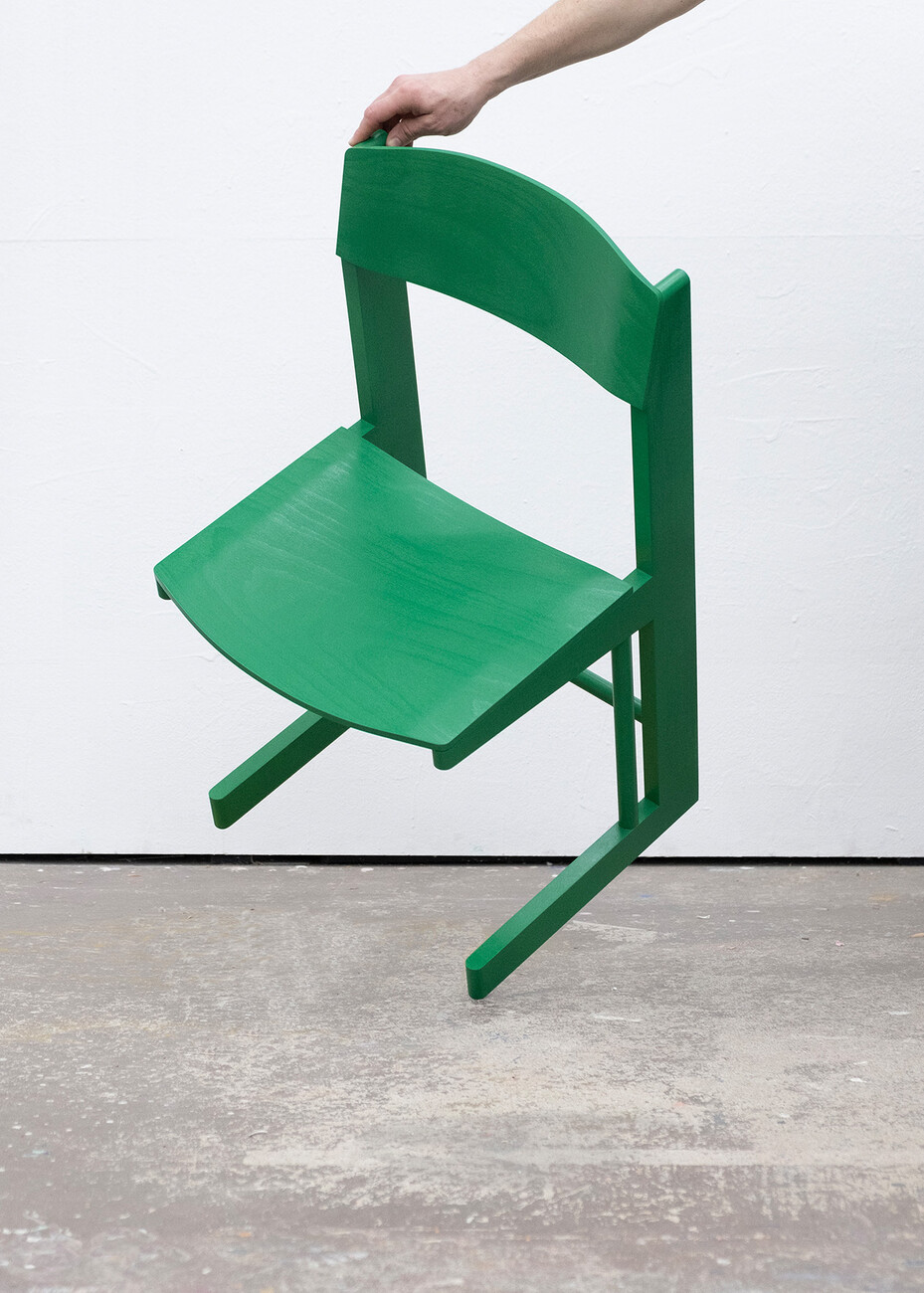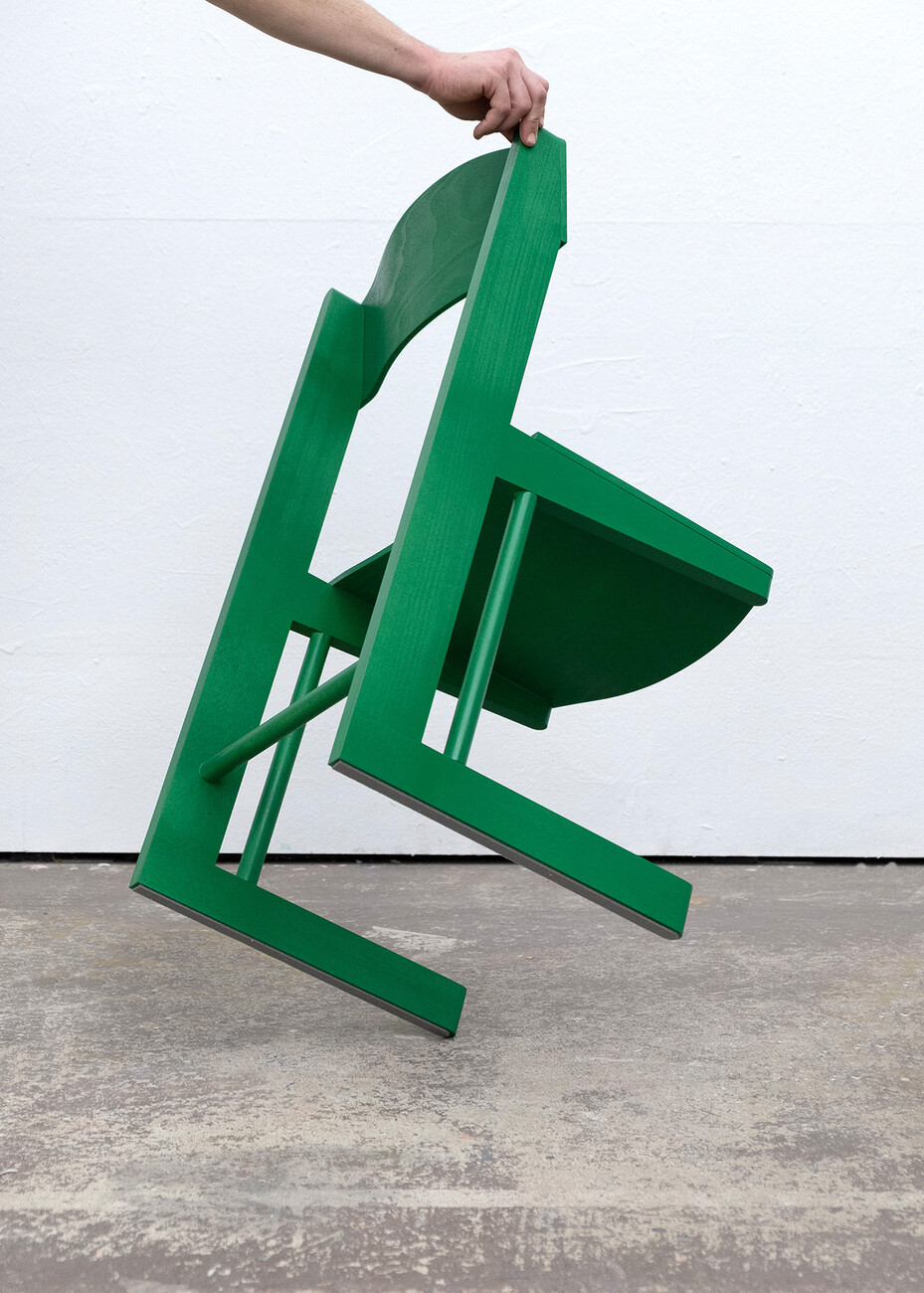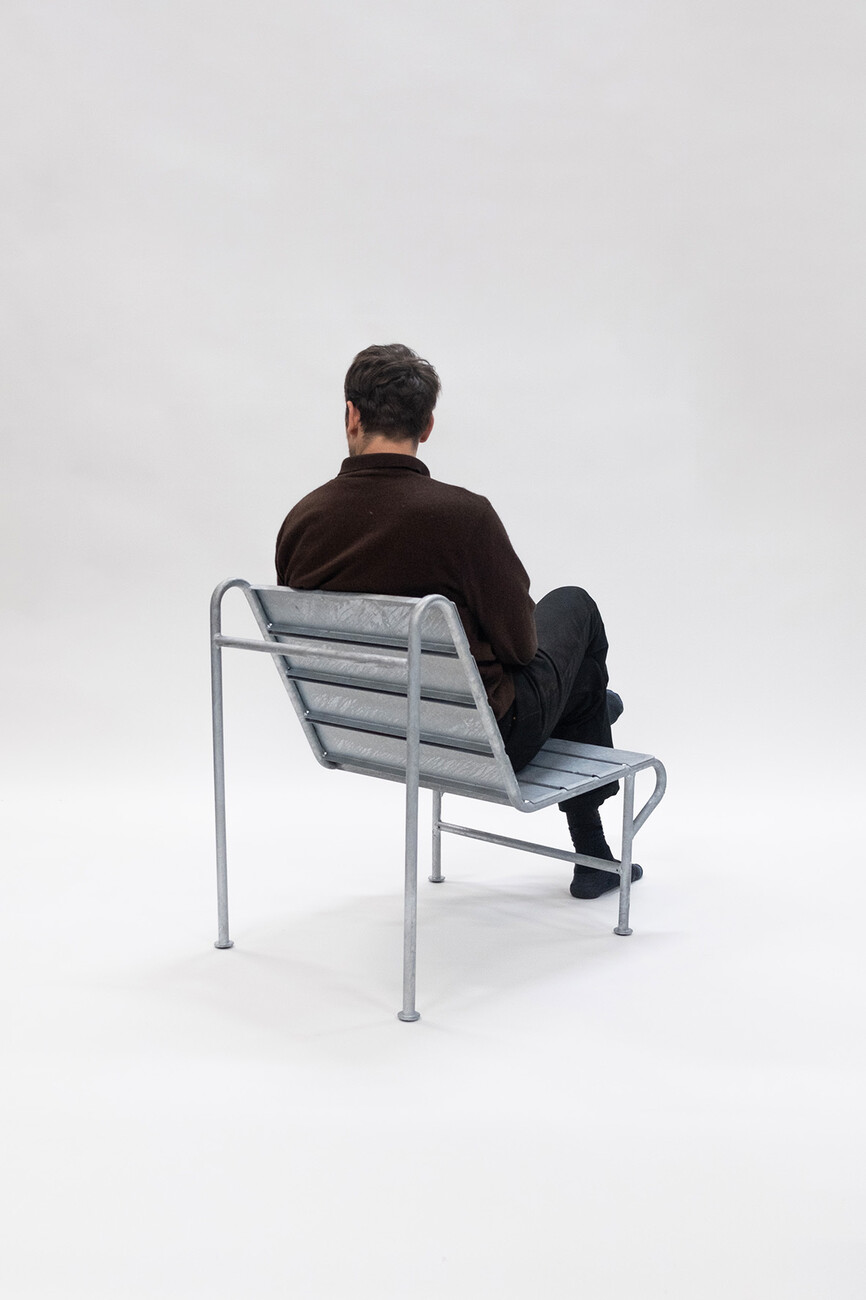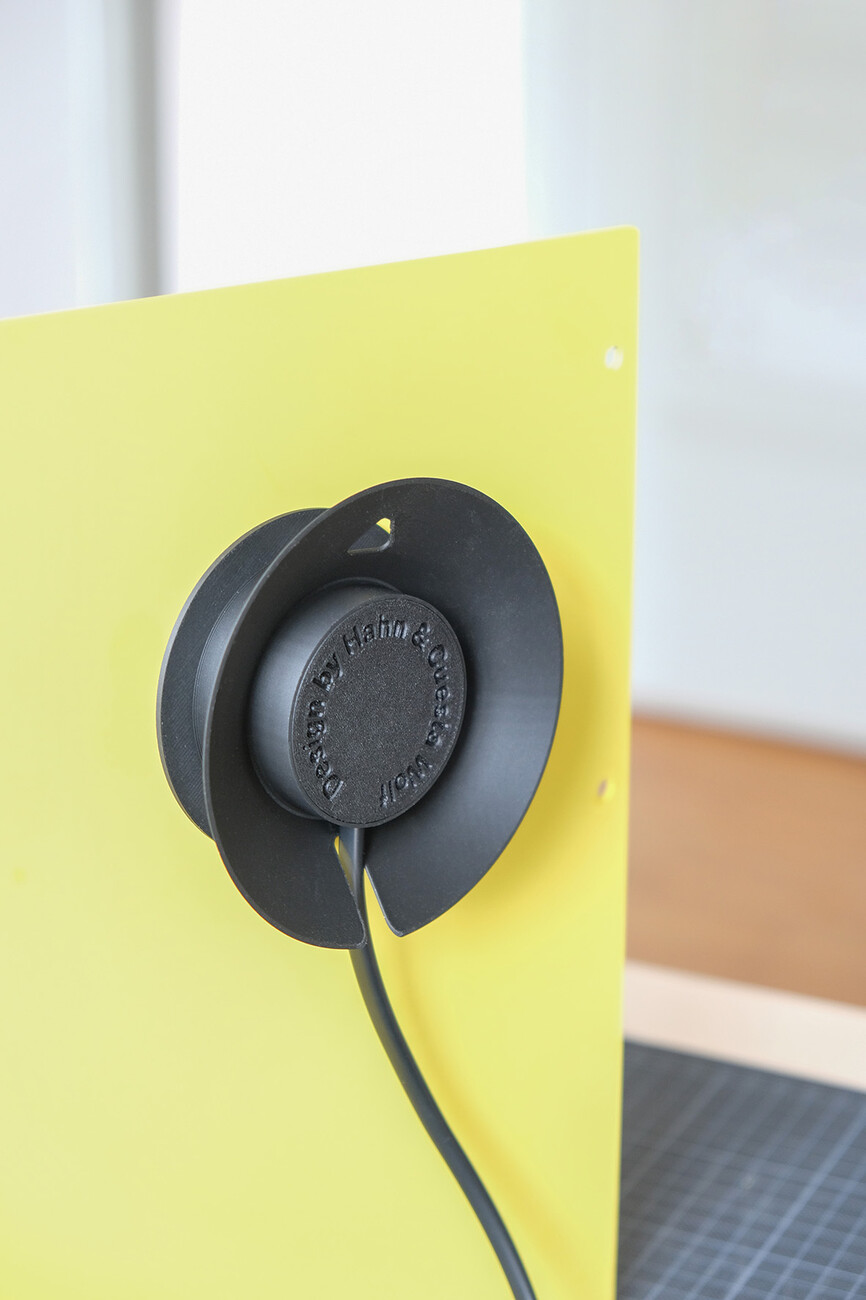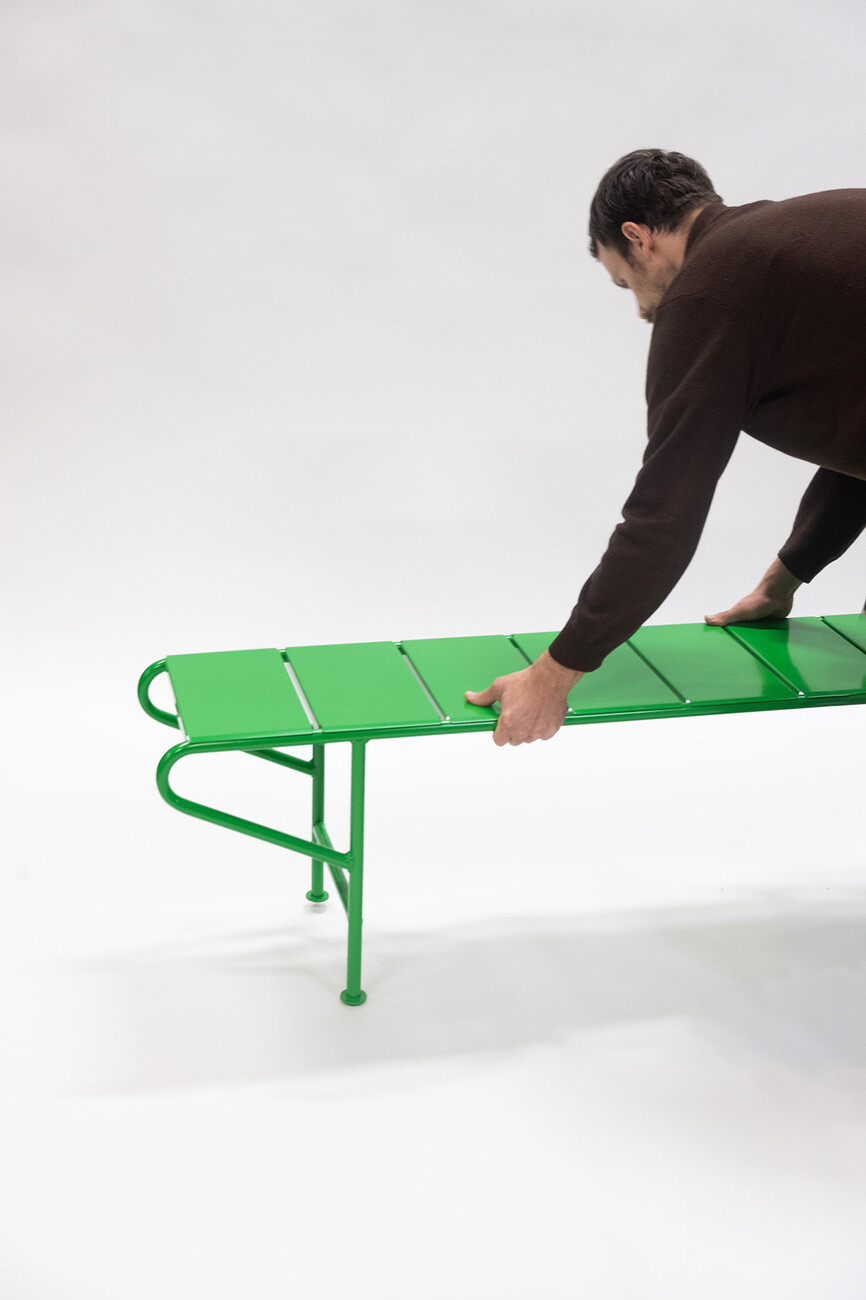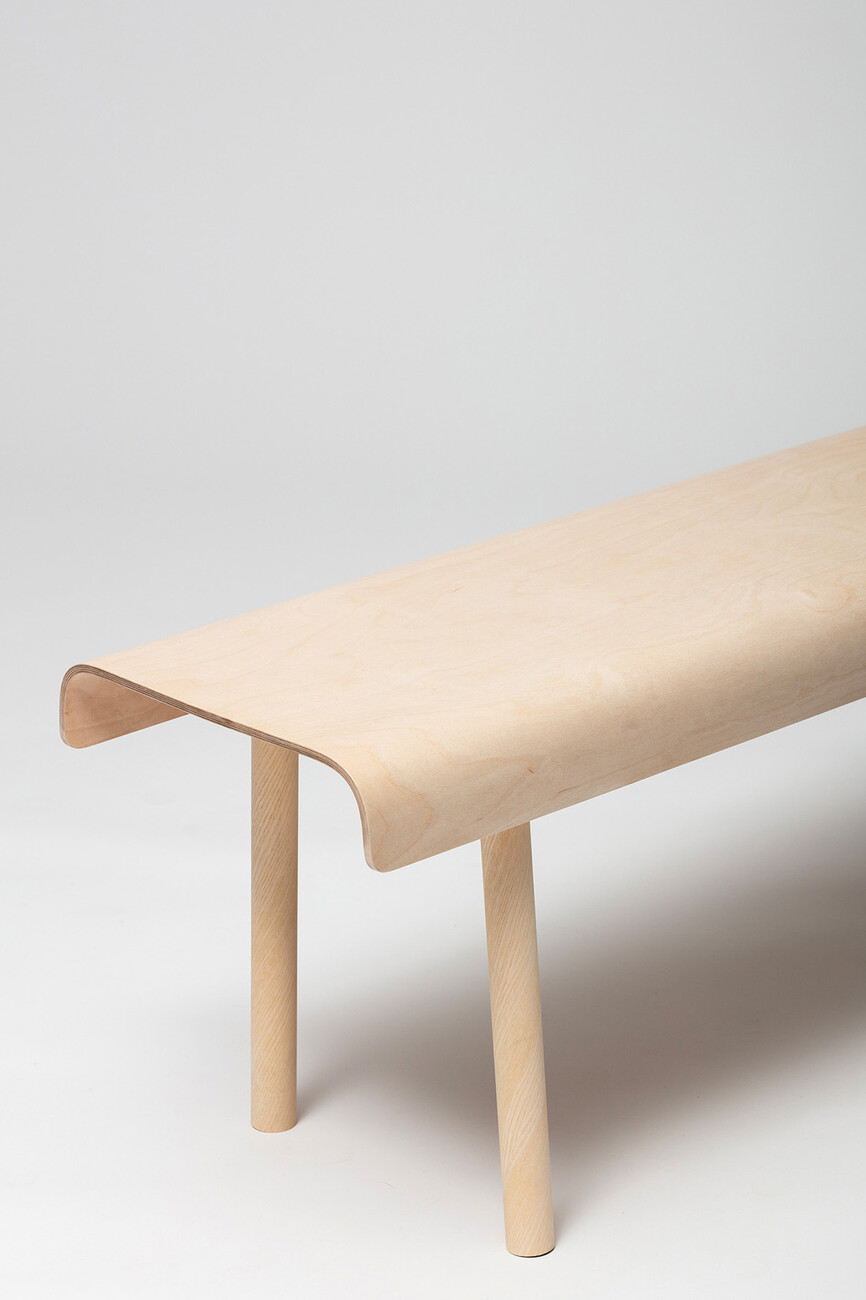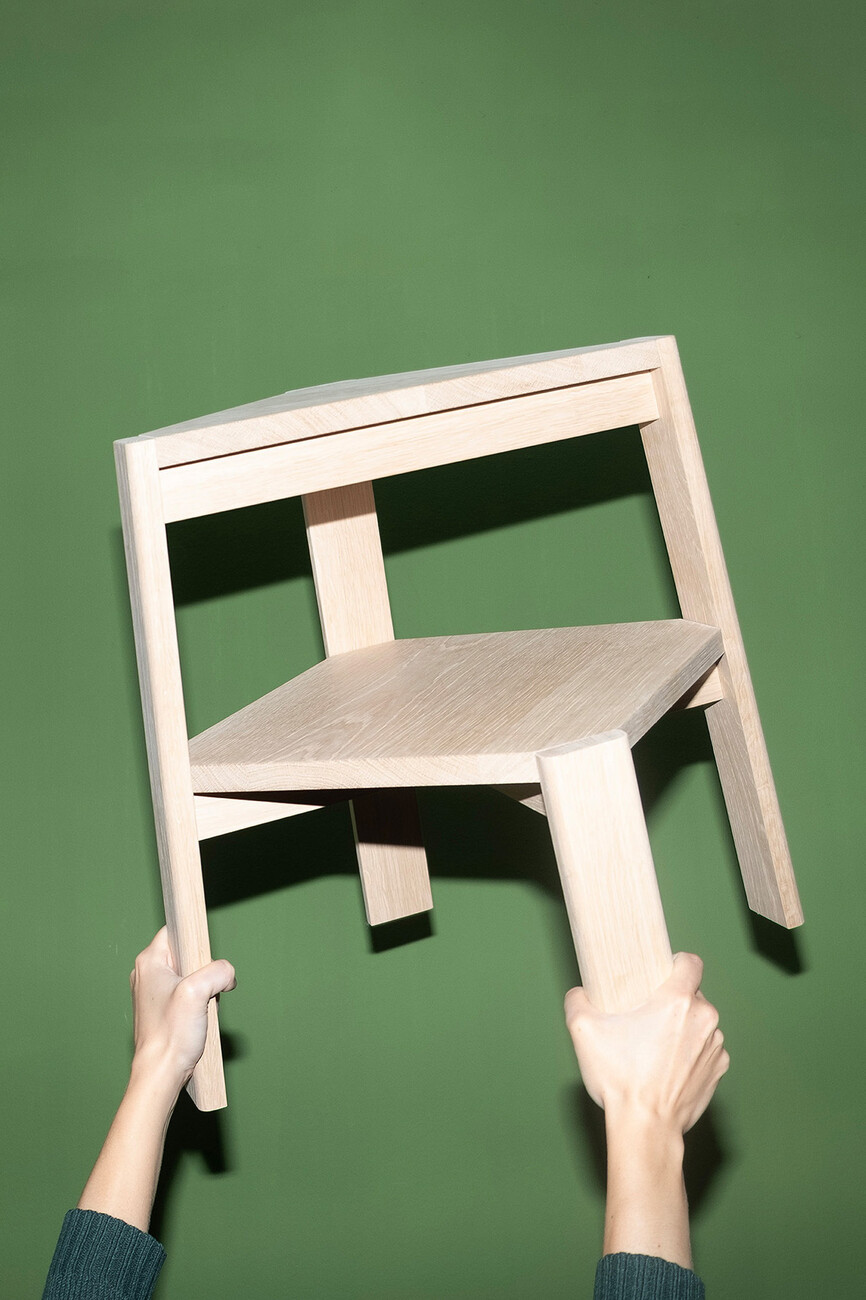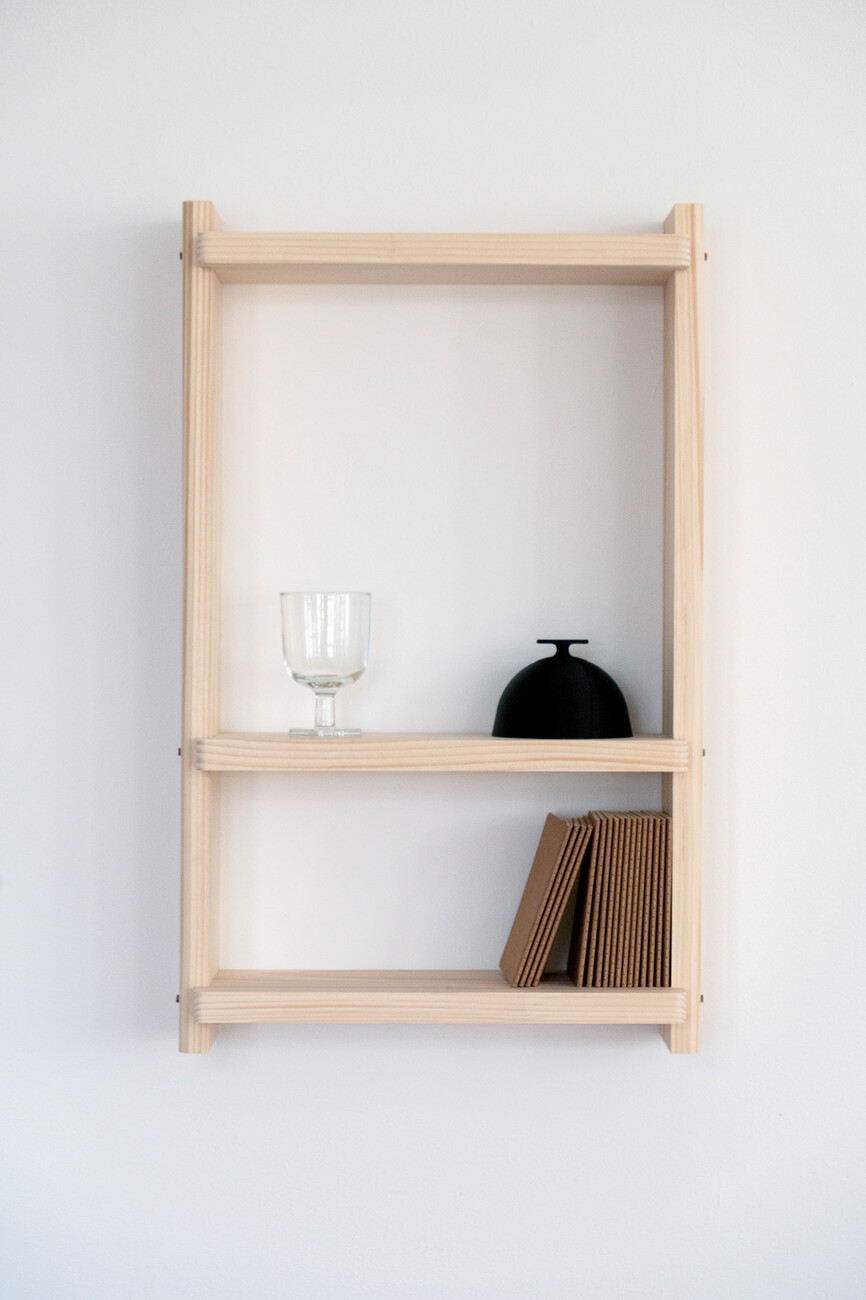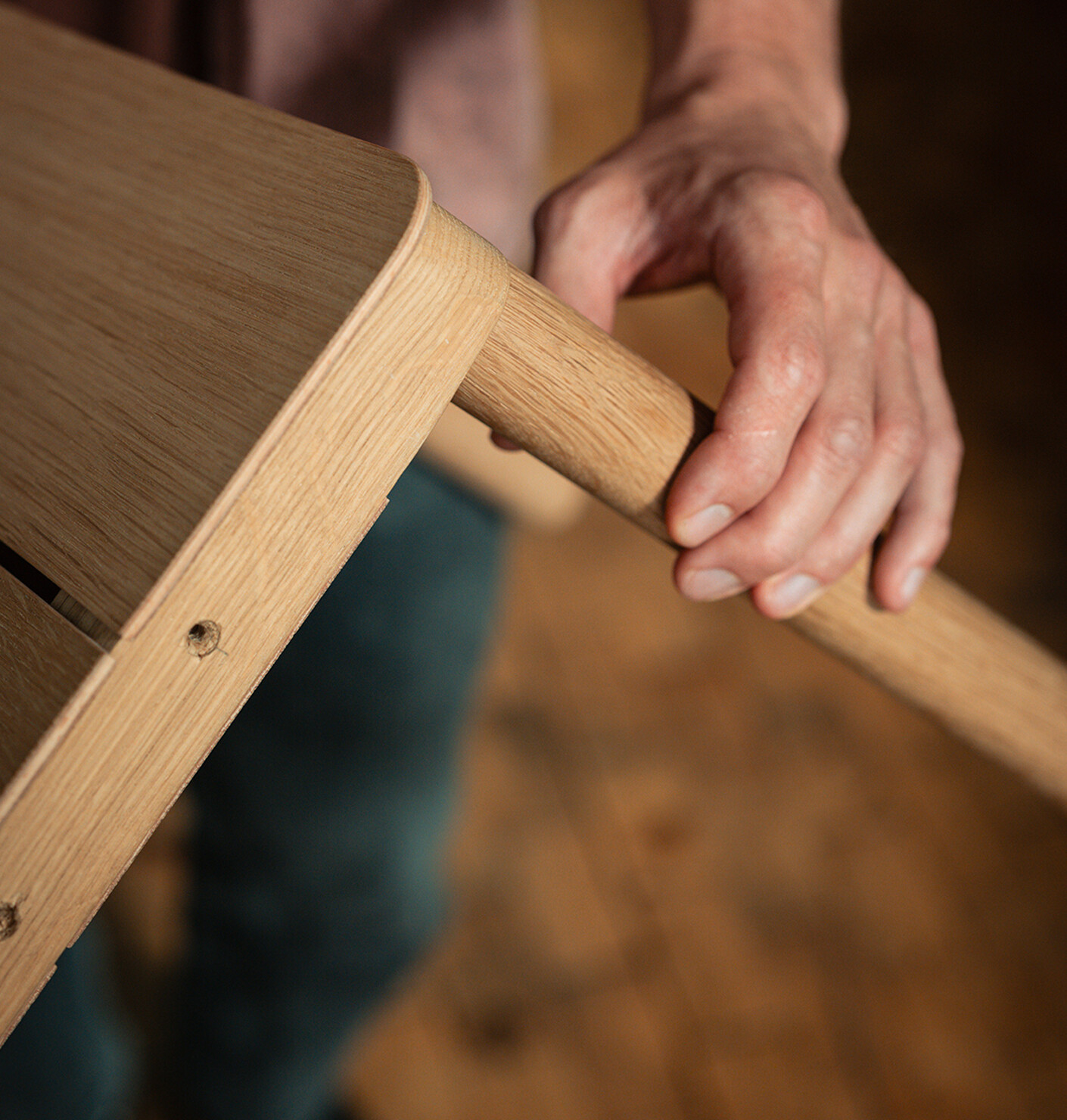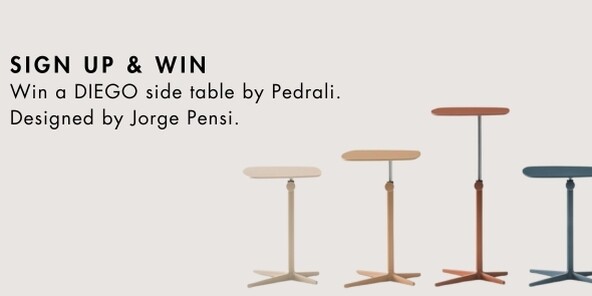YOUNG TALENTS
The joy of the process
Anna Moldenhauer: Jacobo, you studied industrial design and worked for Werner Aisslinger, among others. What insights did you gain from your time in the studio?
Jacobo Cuesta Wolf: I studied product design at Wismar University of Applied Sciences and began taking courses in interior design quite early on. For me, furniture is the interface between space and object. The internship was part of my studies, and I spent quite a long time considering where I wanted to apply. Working with Werner Aisslinger was a good match, and I gained a lot of insights there – for example, that there are quite a few twists and turns in the design process. In addition, Werner Aisslinger and some professors from Wismar had connections to Burg Giebichenstein University of Art and Design Halle, because quite a few people who studied with Werner are now teaching here at Burg. After my time in Wismar, I studied industrial design there. The design process played a major role in this course. Over time, I became more and more interested in ‘everyday objects’. My time with Werner Aisslinger continues to influence me today and has definitely strengthened my interest in processes, materials and furniture.
Robert, you completed a carpentry apprenticeship before studying interior design. Why did you decide to learn a trade instead of going straight to university?
Robert Hahn: I have felt connected to craftsmanship since childhood, so training as a carpenter was a logical step for me. My studies allowed me to build on that. In the past, craftspeople were responsible for the design, but today the design is often created in an office and then handed over to the craftspeople. I found it exciting and important to know both sides, because when you know both sides, you are more likely to achieve a coherent result: well designed and well thought out for both manufacturing and production.
You both teach at Burg Giebichenstein University of Art and Design in Halle. What is important for you to convey?
Jacobo Cuesta Wolf: We got to know each other through teaching and quickly realised that our focus in our own work and in what we want to convey is quite similar. We want to give students a design mindset and an appreciation for the process of arriving at a design through one-to-one models. To this end, topics such as the lifespan of objects are important to us, because the sustainability of objects is defined not only by their materiality, but also by their life cycle. This is something that designers can influence in a very concrete way.
Your design is honest, practical and robust. You don't hide anything. At the same time, you test the limits of wood. What appeals to you about this?
Jacobo Cuesta Wolf: Our focus on wood also stemmed from the fact that Robert is a carpenter and has a great deal of expertise in this area. We have worked a lot with metal in our projects. Wood is an accessible material that is easy to control during processing, which is why we often work with it in teaching. However, we also had the impression that the possibilities of working with wood have not yet been fully exploited. One example is a system of wooden nails that originates from façade construction and is being transferred to furniture production.
How do you work? Can you give an example?
Robert Hahn: We often have a situation where one of us has an idea, whether it's for a technology or a detail. We discuss it and see if we can both get excited about it. At the start, the outcome is usually still open. Then we move relatively quickly to prototype construction to see if the idea is viable. We usually test five to ten models until we achieve an acceptable interim result or reach our goal.
In addition to your collaboration, you also engage in other joint ventures and your own projects. What needs to be in place for you to launch an idea together, rather than implementing it alone or in partnership with others?
Robert Hahn: It depends a little on the type of project, but basically we both work relatively little on our own. Robert and I share an enthusiasm for technology, for processes, for the fascination of everyday objects. As soon as the idea moves in the direction of architecture and space, we seek out exchanges with other creative people. We don't believe in the image of the old author-designer, but rather in collaboration.
What is the conclusion of your participation in this year's SaloneSatellite?
Jacobo Cuesta Wolf: As SaloneSatellite 2025 has been over, we have come to realise how valuable it was to participate. We met colleagues such as Alexander von Dombois and also had the opportunity to receive feedback from international figures. We also found it interesting that many visitors to our stand asked whether we could produce the objects ourselves in small quantities. We hadn't thought about that before. Seeing the ‘25kg’ label by Konstantin Grcic in Milan also inspired us. So we definitely took away some food for thought from our time there.
How do you view the current situation for young designers?
Robert Hahn: The overall economic situation is certainly tense. Nevertheless, I believe that a lot is possible. As young designers, we don't have to follow the well-trodden paths that previous generations have taken. The presence of social media has softened many things, and today it's also about making clever use of new opportunities. A good photo cannot replace the effect of lifting our bench and realising that it only weighs four kilos. That is why the combination of both is so important.
Jacobo Cuesta Wolf: The new possibilities are both a blessing and a curse. Werner Aisslinger once said to me that he had the impression that designers were sometimes only being asked to work for marketing purposes. This makes it particularly difficult for young creatives to gain a foothold in the industry. At the same time, I have the impression that greater networking gives us the opportunity to produce things differently, including on our own. The ways are changing and we have to make sure we keep up.
Where can we see your work next?
Jacobo Cuesta Wolf: We are currently exploring that, for example with a view to 3daysofdesign next year. We are also considering developing our own small exhibition formats on current issues and collaborating with creative people we know.
What are you currently working on?
Robert Hahn: Basically, we're working on lots of things at the same time. In addition to our wooden and metal objects, we've also started designing a lamp that can be either freestanding or suspended thanks to a suspension system. We've also scaled down our designs somewhat and recently created a pepper mill, for example. At the same time, we're also working with ceramics.
Jacobo Cuesta Wolf: We certainly don't run out of ideas. It's a very comfortable situation when you have ten or twenty ideas on the table at the same time, all going in different directions, and then you can decide which approach you want to explore further.

